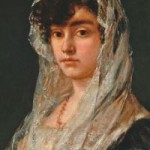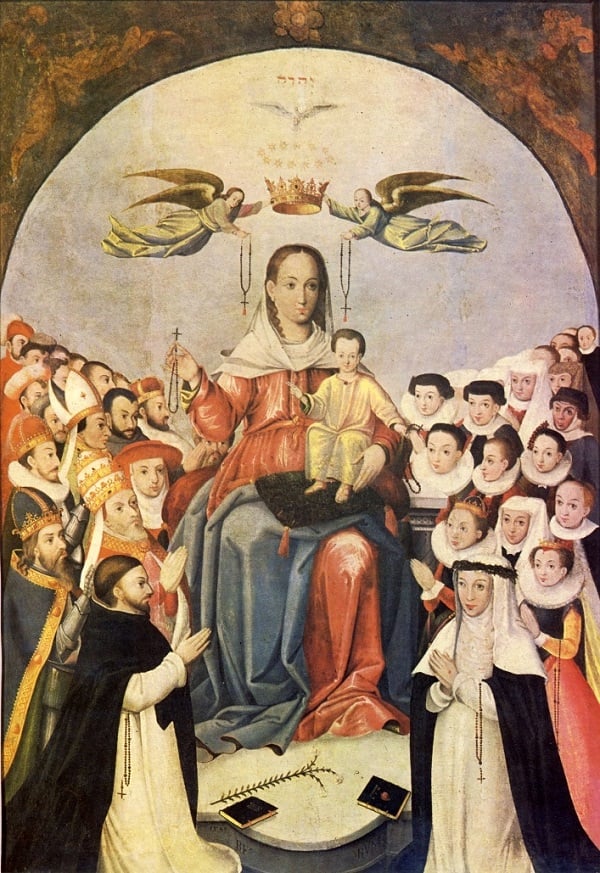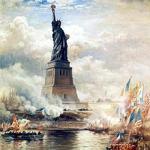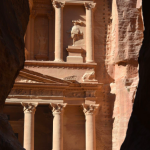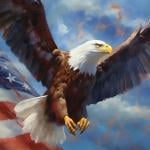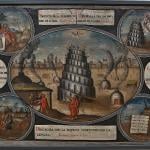![]() This Sunday, the Catholic Church (and many other denominations) celebrate Trinity Sunday.
This Sunday, the Catholic Church (and many other denominations) celebrate Trinity Sunday.
You’ve seen artists’ renditions of the Trinity: At Jesus’ baptism in the Jordan, there’s the Son of God in the water, God the Father in the clouds, and the third Person of the Trinity, the Holy Spirit, hovering like a dove above Jesus’ head. Or sometimes, you see them on the clouds in heaven: The Son and the Father sitting side by side, enthroned; and the Holy Spirit depicted as a dove between their heads, framed by a halo.
The Trinitarian image seen most frequently in the Eastern church is different, though: In Eastern Orthodox Christianity, the most familiar image is of a Russian icon by Andrey Rubley (1408-25 A.D.) called the “Old Testament Trinity.” In it, three winged creatures sit together around a table.
I remember the first time I encountered the icon. A priest explained that the three winged figures, like angels, represented the Trinity, and that each of the divine Persons was co-equal with the others.
But what I have learned since is that there is another, very different interpretation. The icon is often called the “Hospitality of Abraham”, and represents the three angels (Three Visitors) who appeared to Abraham at Mamre in Genesis 18:1-15.
Now the LORD appeared to him by the oaks of Mamre, while he was sitting at the tent door in the heat of the day. When he lifted up his eyes and looked, behold, three men were standing opposite him; and when he saw them, he ran from the tent door to meet them and bowed himself to the earth, and said, “My Lord, if now I have found favor in Your sight, please do not pass Your servant by. Please let a little water be brought and wash your feet, and rest yourselves under the tree; and I will bring a piece of bread, that you may refresh yourselves; after that you may go on, since you have visited your servant.” And they said, “So do, as you have said.” So Abraham hurried into the tent to Sarah, and said, “Quickly, prepare three measures of fine flour, knead it and make bread cakes.” Abraham also ran to the herd, and took a tender and choice calf and gave it to the servant, and he hurried to prepare it. He took curds and milk and the calf which he had prepared, and placed it before them; and he was standing by them under the tree as they ate.
Then they said to him, “Where is Sarah your wife?” And he said, “There, in the tent.” He said, “I will surely return to you at this time next year; and behold, Sarah your wife will have a son.” And Sarah was listening at the tent door, which was behind him. Now Abraham and Sarah were old, advanced in age; Sarah was past childbearing. Sarah laughed to herself, saying, “ After I have become old, shall I have pleasure, my lord being old also?” And the LORD said to Abraham, “Why did Sarah laugh, saying, ‘Shall I indeed bear a child, when I am so old?’ Is anything too difficult for the LORD? At the appointed time I will return to you, at this time next year, and Sarah will have a son.” Sarah denied it however, saying, “I did not laugh”; for she was afraid. And He said, “No, but you did laugh.”
The “Hospitality of Abraham” is a type of the Trinity—but not a representation of the Trinity itself.
Actually, the Russian Orthodox Church specifically forbids any depiction of God the Father in the form of a human person. There had long been a tradition against showing the Father; and in 1667, the Great Synod of Moscow addressed this canonically in Chapter 2, §44:
It is most absurd and improper to depict in icons the Lord Sabaoth (that is to say, God the Father) with a grey beard and the Only-Begotten Son in His bosom with a dove between them, because no-one has seen the Father according to His Divinity, and the Father has no flesh, nor was the Son born in the flesh from the Father before the ages. And though David the prophet says, “From the womb before the morning star have I begotten Thee” (Ps.109:3), that birth was not fleshly, but unspeakable and incomprehensible. For Christ Himself says in the holy Gospel, “No man hath seen the Father, save the Son” (cf. John 6:46). And Isaiah the prophet says in his fortieth chapter: “To whom have ye likened the Lord? and with what likeness have ye made a similitude of Him? Has not the artificier of wood made an image, or the goldsmiths, having melted gold, gilt it over, and made it a similitude?”(40:18-19). In like manner the Apostle Paul says in the Acts (17:29), “Forasmuch then as we are the offspring of God, we ought not to think that the Godhead is like unto gold or silver or stone, graven by art of man’s imagination.” And John Damascene says: “But furthermore, who can make a similitude of the invisible, incorporeal, uncircumscribed and undepictable God? It is, then, uttermost insanity and impiety to give a form to the Godhead” (Orthodox Faith, 4:16). In like manner St. Gregory the Dialogist prohibits this. For this reason we should only form an understanding in the mind of Sabaoth, which is the Godhead, and of that birth before the ages of the Only-Begotten-Son from the Father, but we should never, in any wise depict these in icons, for this, indeed, is impossible. And the Holy Spirit is not in essence a dove, but in essence he is God, and “No man hath seen God”, as John the Theologian and Evangelist bears witness (1:18) and this is so even though, at the Jordan at Christ’s holy Baptism the Holy Spirit appeared in the likeness of a dove. For this reason, it is fitting on this occasion only to depict the Holy Spirit in the likeness of a dove. But in any other place those who have intelligence will not depict the Holy Spirit in the likeness of a dove. For on Mount Tabor, He appeared as a cloud and, at another time, in other ways. Furthermore, Sabaoth is the name not only of the Father, but of the Holy Trinity. According to Dionysios the Areopagite, Lord Sabaoth, translated from the Jewish tongue, means “Lord of Hosts”. This Lord of Hosts is the Holy Trinity, Father, Son and Holy Spirit. And although Daniel the prophet says that he beheld the Ancient of Days sitting on a throne, this should not be understood to refer to the Father, but to the Son, Who at His second coming will judge every nation at the dreadful Judgment.



